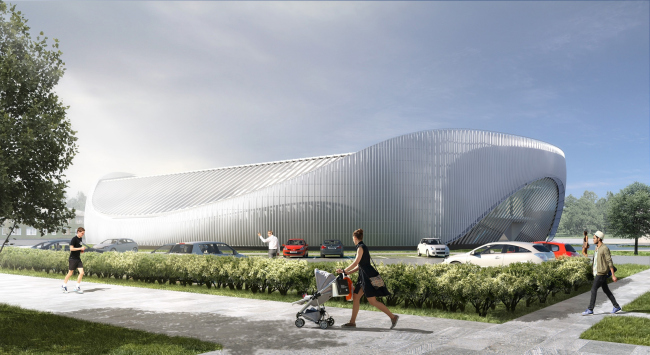|
Published on Archi.ru (https://archi.ru) |
|
| 19.06.2019 | |
|
Alexander Poroshkin: “Our motto is to work for the good of people” |
|
|
Lara Kopylova |
|
| Studio: | |
| MAParchitects | |
|
The leader of MAParchitects, a company that recently scored victories in four large-scale international competitions, Alexander Poroshkin, shares about his winning strategy, how to form friendly – aka professional – ties, how to organize working in a team with regard to your colleagues’ psychologies, and how to involve your clients into your creative game, at the same time learning from them. NoneCopyright: © MAParchitectsStart How did your architectural biography begin? In 2006, I graduated with honors from the Tomsk University of Architecture. For two years running I would win the “best student” title, and already at that time I was winning in international competitions. In my fifth year I already drove a car of my own because I won a 10 thousand dollars’ worth grand-prix in an American competition for the project of housing complex for people of limited mobility (). Still later on, me and my wife Natalia (she also graduated with honors, by the way) moved from Tomsk to Moscow where we landed a job at ASADOV Architects. Since 2010, I actively participated in numerous competitions, including ones for energy-efficient homes. At ASADOV Architects, they would entrust me with grand-scale projects – residential areas and experimental ones too. Nobody will entrust a young architect with planning a whole residential area but designing an individual building is a different matter. I would be getting more and more proposals, and we did four different concepts of modular housing for the Chinese company named Zhuoda. This house was built at “MOSBILD” show, and it was featured at “Open Innovations” forum. Ultimately, our designer went to China, and they manufactured 50 houses within a span of two months. At ASADOV Architects, we also met Ivan Ovchinnikov, the creator of “Double House”, with whom we are also cooperating now, and with Maxim Malein, with whom I am now teaching at the Moscow Architectural Institute. We also visited a few times the “Goroda” festivals that were organized by Andrey and Ivan. All these friendly and professional ties came in very handy in our life and in our work. How was your company MAParchitects founded? Where you did get your first orders? 2011 can be considered a milestone. First I opened my architectural office all on my own, then I started to invite my friends to join in. Competitions and partners However, pretty soon you started winning serious international competitions, one by one. How could such a young company pull something like that? It might seem that a young architectural company started winning international competitions right out of the blue but, as you can see, we already had tremendous experience. By 2015 we already landed a few contracts, and we could say that, yes, this project was done by us. Right about that time, the agency “Center” appeared that started to organize international competitions, and they introduced an adequate procedure for submitting your legal documents and portfolio. As it turned out, we qualified. We took part in three competitions and won all the three of them: it was landscaping the waterfronts of the Kaban Lakes in Kazan together with the Chinese company Turenscape in 2015, the project of , and redevelopment of a building on the Dmitrovskoe Highway in collaboration with Promcode in 2017. In 2018, we won in the competition for developing a master plan of the Oktyabrsky Isle in the city of Kaliningrad in a consortium with the British LDA and WSP.  Redevelopment of the project on the Dmitrovskoe Highway, MoscowCopyright: © MAParchitects + PROMCODE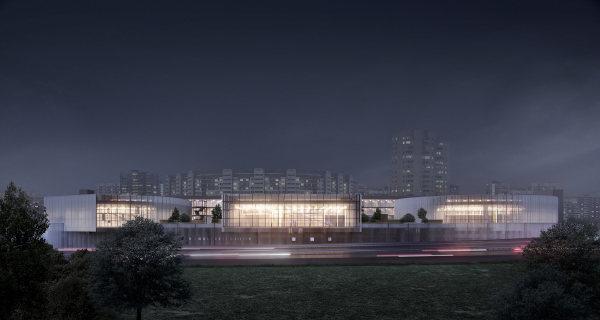 Redevelopment of the project on the Dmitrovskoe Highway, MoscowCopyright: © MAParchitects + PROMCODE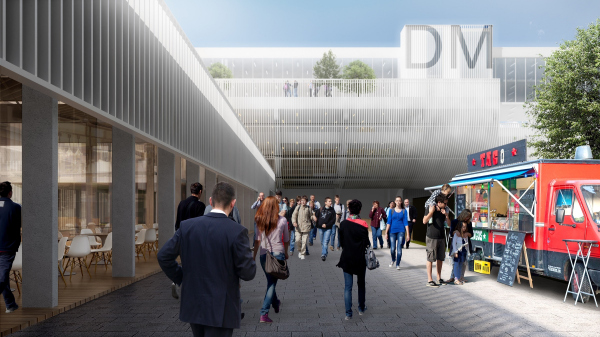 Redevelopment of the project on the Dmitrovskoe Highway, MoscowCopyright: © MAParchitects + PROMCODE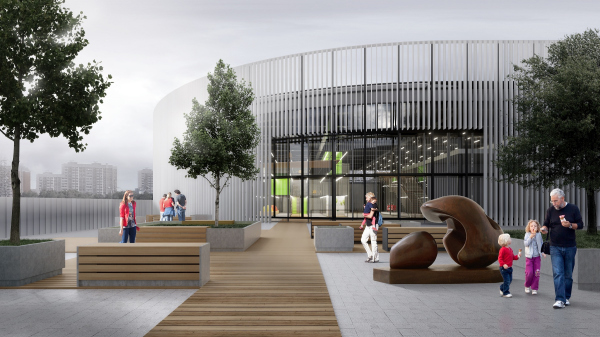 Redevelopment of the project on the Dmitrovskoe Highway, MoscowCopyright: © MAParchitects + PROMCODE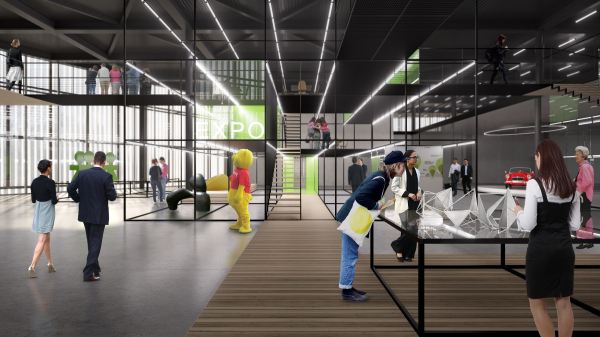 Redevelopment of the project on the Dmitrovskoe Highway, MoscowCopyright: © MAParchitects + PROMCODEMany of the victories that you scored in high-profile competitions took place in consortium with international teams. How do you go about organizing your relationships with partners, specifically with foreign ones? The special feature of our MAParchitects office is that we know how to work in a consortium. Usually, an architect tries to dominate, and we prefer division of duty. The competition for redeveloping that building on the Dmitrovskoe Highway, we won it in collaboration with Promcode: they did the marketing part, town planning analysis and economic performance, and we did architecture and design. When we worked in collaboration with our Chinese and British partners, we also did everything that had to do with architecture. We never encroached on other members’ areas of responsibility – we divided our duties, and made the project schedule. We are using all kinds of teleworking services: Dropbox, Google Drive, Trello, and so on. This allows us to keep up the team work without having to be in the same room at the same time because in the cloud drive you can easily track everybody’s work. But your secret to winning in international competitions cannot lie in the workflow organization alone? Organizing your workflow efficiently saves you a lot of time, and when you have a lot of time, you can deliver high-quality performance. A great example was working in collaboration with Turenscape at the Kazan competition. We had a month and a half to do the whole thing. Stanley Lung, the manager from the Chinese side, drew up the project schedule, marked how many people worked from our side and from their side, and what specific result we were to get by the end of the month. The schedule contained not only our tasks but also our birthdays and days off. It was known in advance who would be absent from work, and for how long. And we had the entire album ready within a week’s time. This is convenient: at the very outset you see the end goal – the album, and the rest of the time you just fill that in. And we saved ourselves the trouble to make a whole lot of work that ultimately is not included in the album and goes to waste. At the end of the day, we had more than 200 pages on the Kaban waterfront. In terms of the development of each node and the overall strategy, our project was much stronger than the work of competitors. 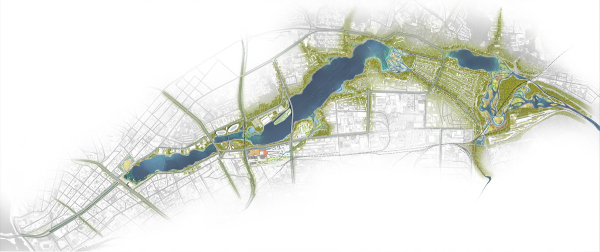 Concept for the development of the waterfronts of the Kaban lake systemCopyright: © Turenscape + MAParchitects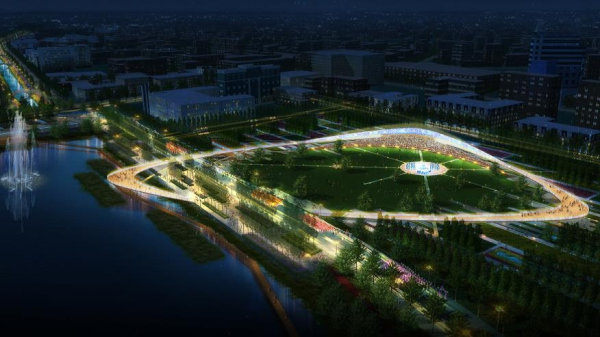 Concept for the development of the waterfronts of the Kaban lake systemCopyright: © Turenscape + MAParchitects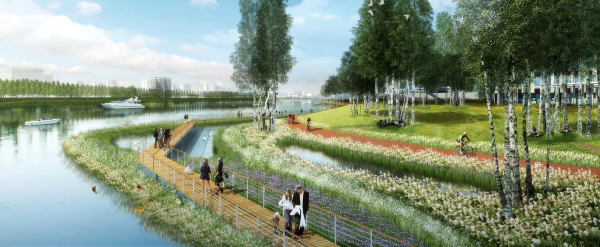 Concept for the development of the waterfronts of the Kaban lake systemCopyright: © Turenscape + MAParchitects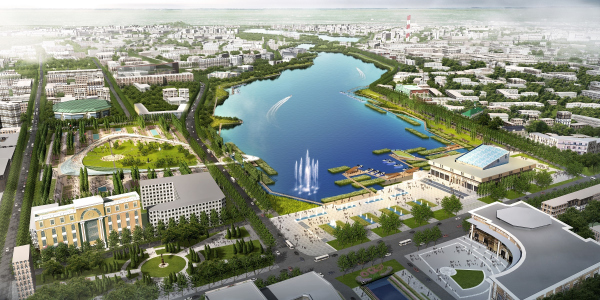 Concept for the development of the waterfronts of the Kaban lake systemCopyright: © Turenscape + MAParchitects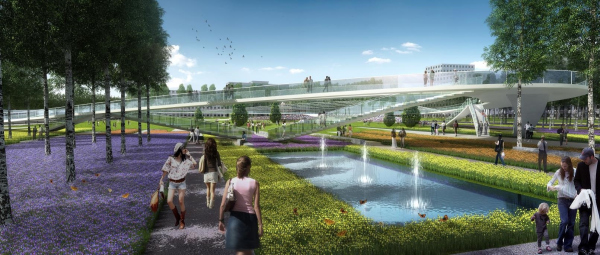 Concept for the development of the waterfronts of the Kaban lake systemCopyright: © Turenscape + MAParchitects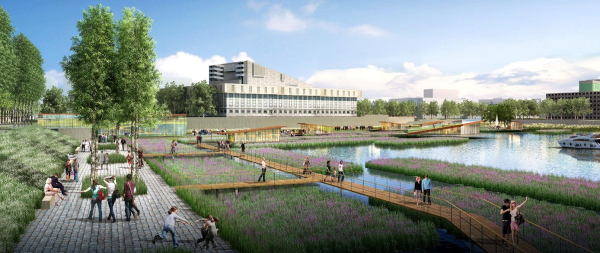 Concept for the development of the waterfronts of the Kaban lake systemCopyright: © Turenscape + MAParchitects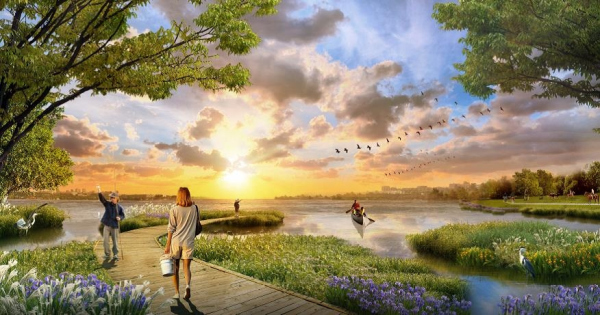 Concept for the development of the waterfronts of the Kaban lake systemCopyright: © Turenscape + MAParchitects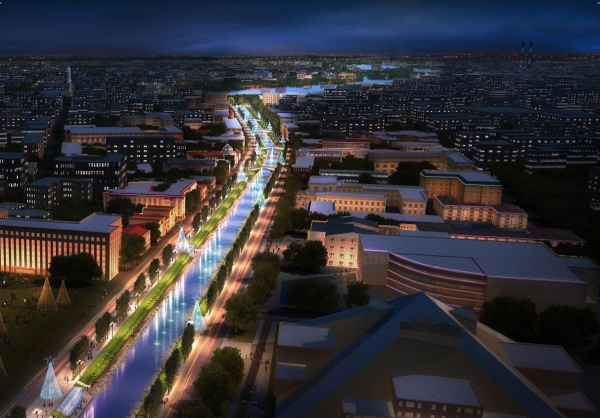 Concept for the development of the waterfronts of the Kaban lake systemCopyright: © Turenscape + MAParchitectsAnd why did China’s Turenscape chose specifically your company to work with? That’s simple. An open competition is announced, and everyone who wants submits their applications. The Chinese did not have a Russian partner, and we did not have a foreign one. We were told: here are five foreign companies that are missing a foreign partner, and they were also told that there were five Russian companies. We chose the company that we liked. To us, the advantage of Turenscape was self-evident because the project involved water purification, and they are known to be particularly good at it. We wrote a letter to them, provided our portfolio, and said that we wanted to cooperate. They said – OK, we came to terms, and started working together. We take pride in the fact that Turenscape were only able to score the first place only in cooperation with us – hitherto, they took part in Russian competitions, including the one for the best concept for the Moskva River, but were only able to come second. Somehow, I cannot seem to believe that everything was so simple, given the knowledge of the competition practice… Everything was different with the competition for the project of Stromynka metro station. The brief of that competition actually had three stations in it: We developed a detailed project of Stromynka, the other two being supposed to be prepared by our foreign partners. But literally at eight o’clock in the evening before the deadline, our foreign partner says to us: “Sorry, we will work with a different partner”. We had to do their work in four hours’ time. At the end of the day, they did not reach the finals, and our Stromynka project got shortlisted, and later on it won the competition. What are the pros and cons of participating in competitions? The cons are mostly of a legal nature: when you sign the contract, you waive your rights. Further on, the client builds your project with whomever he chooses to. The upside to it is self-promotion and new potential clients. When I was still a student, I realized that competitions not only put the architect in a spotlight but they also give him money. And when I started working as an architect I began to get more contracts through competitions. Today, we mostly think of competitions as an advertising tool. We’ve got enough work as it is but we still go for a competition if we see an interesting project. What is the most important thing to do in a competition? You need to consistently get across one idea. For example, in our Kaban waterfront project, we united the entire territory by using three “bands”: ecological, cultural, and transport ones (bike trails). Back in the USSR period, nobody would care about any cohesiveness of territories: you would just build on your sector. We proposed a cohesive idea and subjugated everything else to it. This was also our way with the competition project for Stromynka metro station. We came up with this beautiful idea of a technology-driven forest, transformed this image into pixels, and developed the design on the basis thereof. At the entrance to the overland pavilion, we replicated the track of the descending escalator with pinpoint lights. 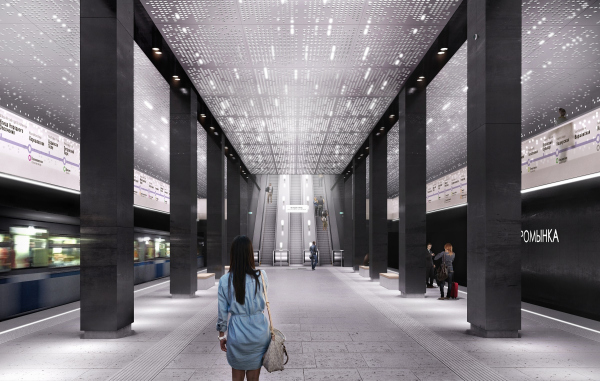 Design of the Stromynka metro stationCopyright: © MAParchitects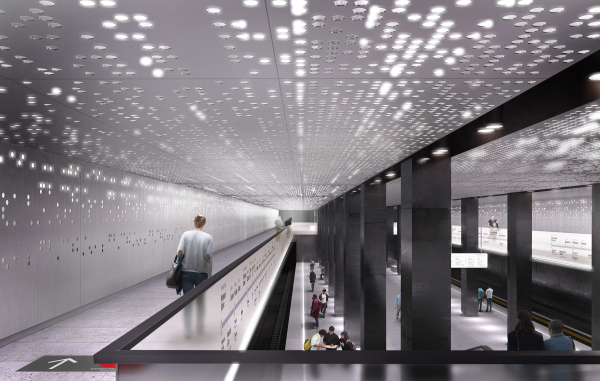 Design of the Stromynka metro stationCopyright: © MAParchitects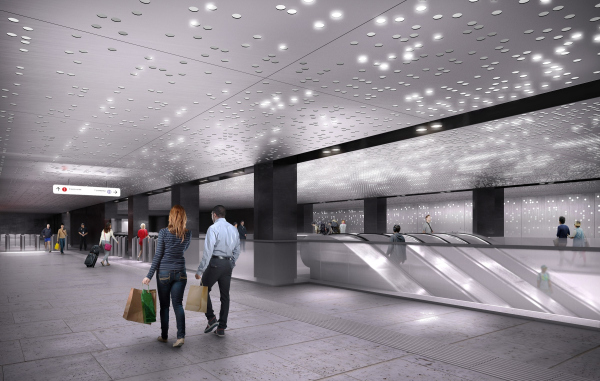 Design of the Stromynka metro stationCopyright: © MAParchitects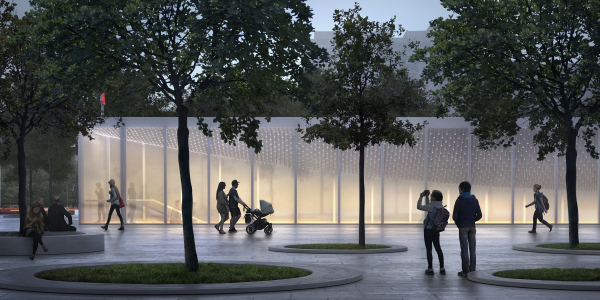 Design of the Stromynka metro stationCopyright: © MAParchitects Design of the Stromynka metro stationCopyright: © MAParchitects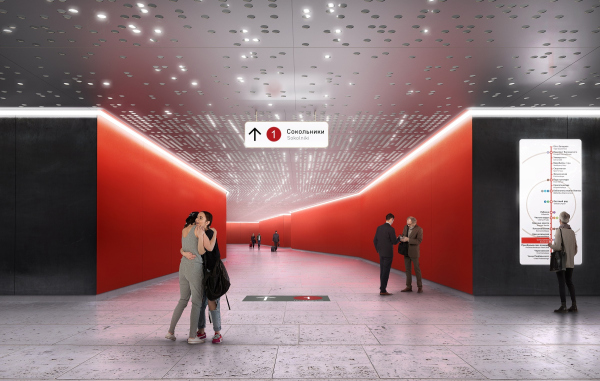 Design of the Stromynka metro stationCopyright: © MAParchitectsIn the competition for the best redevelopment project on the Dmitrovskoe Highway, we were able to beat the more reputed companies because we proposed a more suitable function for the building that stands at the crossing with the Moscow Ring Road. We placed our bets on the fact that the “Dmitrovka” center is a living flexible system that must be based on integrating the transport, logistic, warehouse, and expo services. At the same time, the integration of the owner’s operations into the chosen concept makes perfect sense and makes it possible to create new business formats. It was the main idea that made all the difference. The Company What does MAP mean in the name of your company? There are a few meanings. This stands for both “Masterskaya Aleksandra Poroshkina” (“Alexander Poroshkin Studio”), and a “roadmap” in all the meanings of this term – because we like optimizing our workflows so much. The flexible horizontal organization of workflows in our company and the smart distribution of roles allow us to achieve success in various projects. Accordingly, the competitions that we won were also about projects of different nature: the Stromynka metro station was about design, a residential area in Kaliningrad was about a master plan, the Kaban waterfront was about landscaping, and redevelopment on the Dmitrovskoe Highway was about the financial model. Can you describe your architectural method? When I was preparing to take my entrance exam at the architectural department, I also took lessons from an artist. And he once said to me: look around, nature has already invented everything. A river doesn’t run straight – when it bumps into land, it swerves. It doesn’t matter what you are working with – you just have to look how nature deals with it. This is why, for example, in the landscaping project for Block A101 we refrained from levelling out the construction site (as they often do) but used the natural relief: we simply tied in all of its curves with one trail, which allowed the local residents to get a comfortable recreation space. “Vysota” Ice Arena, OzerskCopyright: © MAParchitectsOr, let’s say, we are to make a master plan of a township. You open your Google Maps, take a virtual trip to Canada, Finland, or wherever else – and see how these things are done there. Everything must take a natural course. We have a project of the Ice Arena in the city of Ozersk. Here is how its shape came about: I wanted to inscribe the playing field into a circle, and, in order to protect it from the rain, we made a chamfer on one side. You don’t need an excessive height over the stadium, so we what we did was cut off the top. By simply responding to technical tasks, we got a very dramatic-looking sports infrastructure project. For the project of a farmers’ market on the Semenovskaya square, we experimented with the parametric shape, which is at the same time essentially an amphitheater. 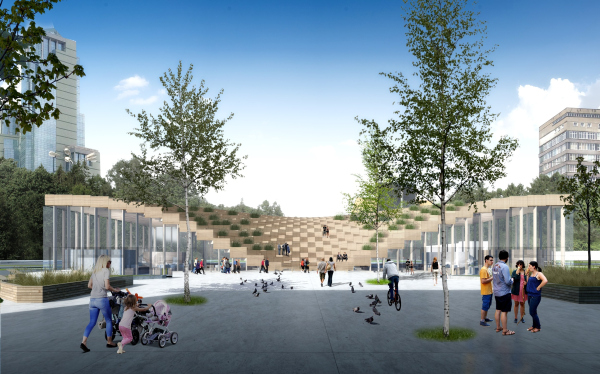 The concept of a farmers′ market on the Izmailovo Square, MoscowCopyright: © MAParchitects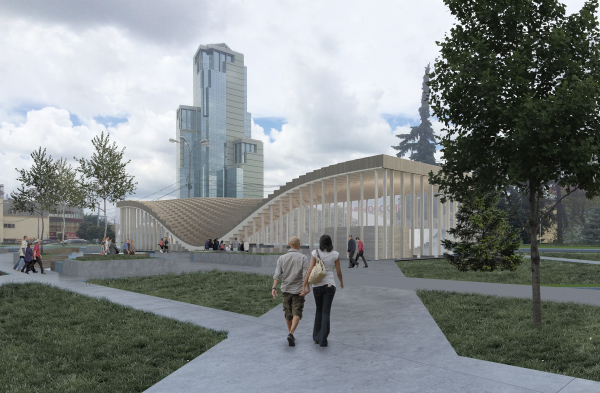 The concept of a farmers′ market on the Izmailovo Square, MoscowCopyright: © MAParchitects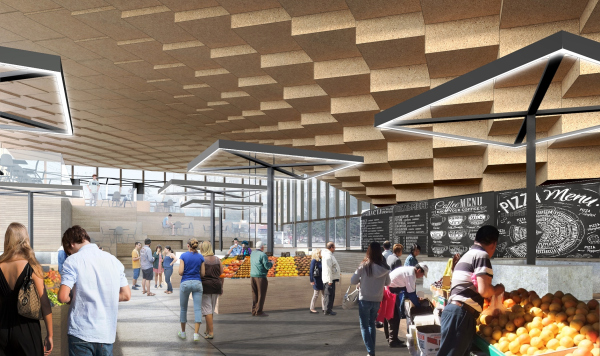 The concept of a farmers′ market on the Izmailovo Square, MoscowCopyright: © MAParchitects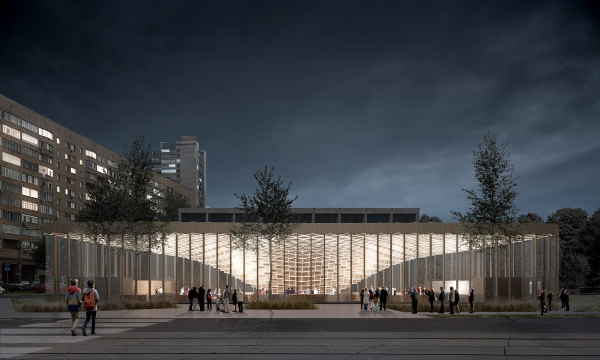 The concept of a farmers′ market on the Izmailovo Square, MoscowCopyright: © MAParchitectsWhat is the main motto of MAParchitects? Our main motto is working for the good of people, be that a grand-scale city project or some minor interior design thing. When I design a housing project I always test it against myself. I think through how to make the parking spots more convenient so you, say, could easily carry your bags of groceries over to your apartment, or easily take the go-cart with your child inside the house. Accordingly, proceeding from the behavior of the future residents, I design the ramps, and some certain parameters of the doors and elevators. I really care to position the apartment in such a way as to protect it from the elevator noise. And, when you do proceed from the resident’s convenience, you automatically fulfil all the construction rules. Customization is also something that we teach at Moscow Architectural Institute. We have very different projects: wooden houses, whole city blocks, and urban projects of the parametric type. How would you describe the styles in which you work? People often refuse to believe that we did all these projects. We don’t have any rigid style constraints. All of our projects are like a suit that’s tailored to order. Based on your architectural experience and knowing your client, you try to process your vision, try to propose the right aesthetics and the right features, come up with the right proportions, and pick the right materials. For example, we a had a client from a remote city of Surgut. He ordered a house in Moscow with meter-thick walls: brickwork 500 millimeters, heat retainer 300 millimeters, plus the façade coating. He needed walls this thick psychologically. He maybe though that well, he was wealthy now, but this couldn’t last forever, and he wanted to make sure that he minimized the heating costs. 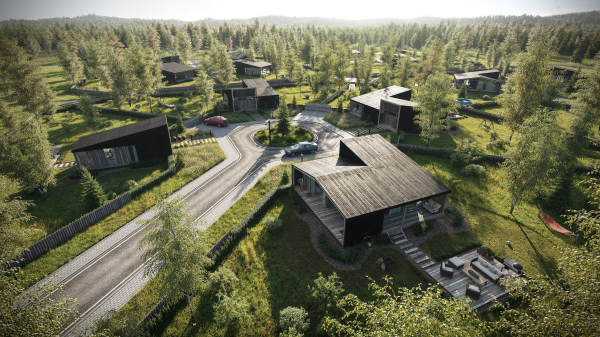 The concept of quick-mount country houses SWIDOMCopyright: © MAParchitects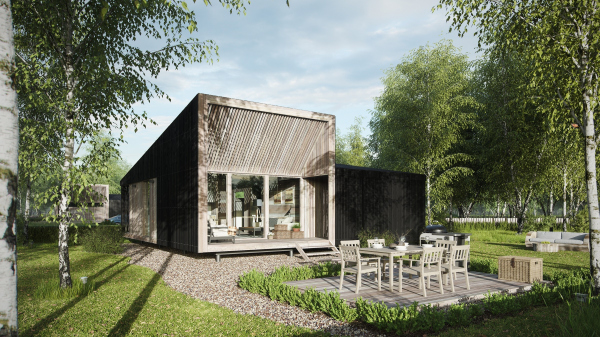 The concept of quick-mount country houses SWIDOMCopyright: © MAParchitects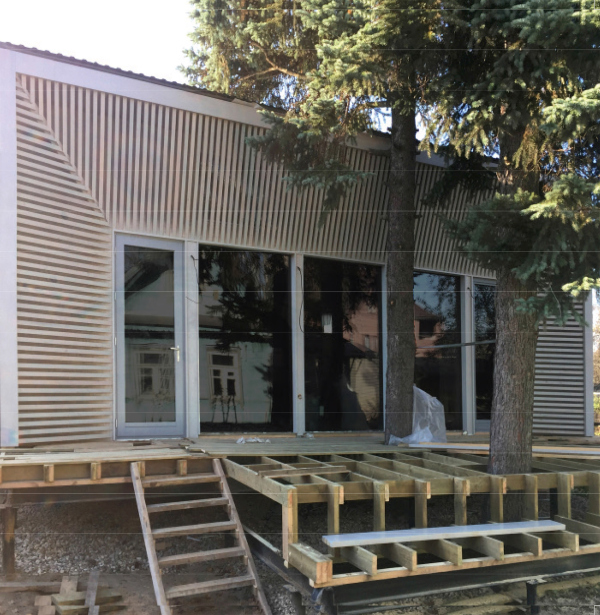 The concept of quick-mount country houses SWIDOMCopyright: © MAParchitects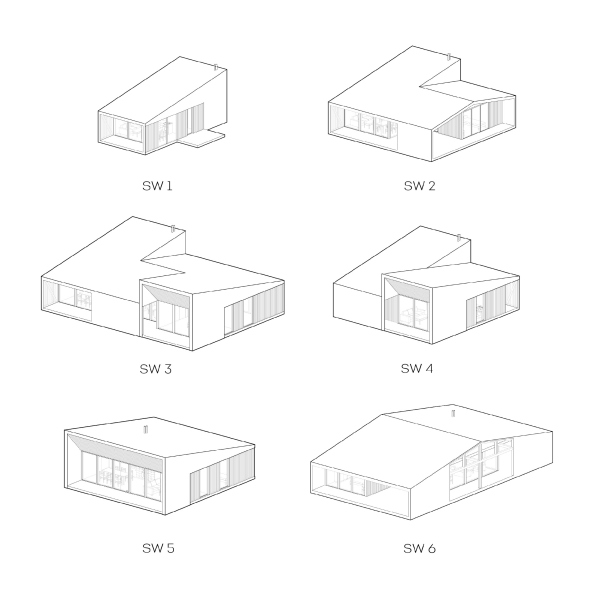 The concept of quick-mount country houses SWIDOMCopyright: © MAParchitectsIf you go to our website, you will see that in 2010-2011 we did not have a single straight line in our projects. At that time, we were all-or-nothing kind of guys. On each project, I would test my new ideas. Sometimes I realized that I slightly overdid it, and I did it differently next time. Then new people came to our company, and projects became more balanced but at the same time more diverse. The individualities of our people are reflected in the MAP Architects projects. Do you easily collaborate with subcontractors? Yes, we have long-standing links with many companies but we can also do the whole work by ourselves if necessary. If you know how to prepare the working documents, you will always be able to defend your idea. For example, we had a 45-hectare project in Odintsovo in 2013, and we did everything ourselves. We could already design whole blocks by then. Our client had a project ready of several 17-story houses of different density – but he wanted to try another construction type with varying height. Say, where do you find such conscientious clients? A young company attracts young clients. We were approached by project managers who wanted to establish themselves. Both parties were interested in the results. Generally, we learn from our clients. They all are different. If you listen to a person attentively, you can learn a lot. The Clients What is your routine of working with the client? How do you formalize your process? At one point, we realized that we didn’t have a model contract or a frame agreement, and that such over-customized approach gets in the way of our business. Meaning – you spend a whole lot of time talking to your clients, and this does not convert into money. And we started drawing a roadmap: first the pre-project survey, then the technical brief on its basis, and then a concept follows. And who gives you the technical specifications for design? Not every business has a technical client department – only large companies do. A typical client would come to us and say: “Hi! We need something beautiful!” And then we used to spend a lot of time talking to him, trying to understand just what exactly meant beautiful to him. Ultimately, what it came down to, was that we did the pre-project survey, then wrote the task for ourselves, and then answered to ourselves with a concept. That is, without realizing it, we would do the work of the technical client. Then it dawned on us that this was consuming time and this was to cost money. We started explaining to our clients that it was their responsibility to provide us with the initial data, the city development plan for land, and so on. Because if we make a concept, and then realize that the initial task does not match the reality, we will have to go back and correct the client’s brief. This is quite a long process that sometimes takes up years. So we began making calculations and diagrams that showed that it was more efficient to commission us with the whole project, and not with a single phase – then we will be able to do many sections concurrently and thus dramatically cut down the time required to complete the project. Since 2017, we have been offering a “one contact” system: not just a beautiful picture but also the financial feasibility calculations, needs analysis, the system approach. This helps to significantly reduce the costs and show to the client that an architect’s work is an integrated thing – you cannot basically split it up into isolated phases. And what do your clients think of your “one contact” system? The client has not yet appreciated our effort. He sees a higher price at the very outset, and he is not ready to pay that kind of money. But then he runs into difficulties: he makes the draft project, then re realizes that he does not have the money to implement it, and then he remakes the draft project over and over again. And only falling into the same trap several times, the client realizes that this “one contact system”, when one company renders all the services, is more convenient and efficient. Apart from competitions, what is your source of contracts? Sometimes this happens spontaneously. For example, once we were asked to design the porch in the Port Plaza business center where our office is situated. So we did, and then it turned out that our client needed to design a stadium. Sometimes you do a small project for a client, and it turns out that he’s got plans for much larger one. For this client, we designed the Ice Arena in Krasnogorsk. Please share more about your project on Kaliningrad’s Oktyabrsky Isle – the largest competition ever won by your company. This is a . The client – the city of Kaliningrad and STRELKA KB – selected the five winners in the end of 2018. The first place was scored by the consortium of LDA, MAParchitects, and WSP. LDA did the historical research, the needs analysis, the master plan, and the transport diagrams. We did the architectural part, and WSP did everything related to water. We’ve got a craftsmen block and a university block there, a large public infrastructure project. We thought out how to open up the residential buildings to the water views. There are flood-prone lands there, and we had to relocate the soil and create different levels. We turned Strelka’s task into a veritable city block. Townships of wooden houses is one of the most important specialties of MAParchitects. Please, share about them. For Ivan Ovchinnikov’s “Double House”, we developed a system for placing the houses in Nikola-Lenivets, and in the township of Snegiri. Sometimes the buyers of Double Houses get together to share a house. We made a research a planned how to position the houses in a fence-less space, avoiding the window-to-window situation, and also designing the automotive and pedestrian flows. We also came up with our own concept of country life in quick-mount wooden houses and called it SWIDOM because all the houses in the township are facing south or command beautiful landscapes. These houses are modular, and you can enlarge them as the number of residents increases. The houses are factory-equipped with a set of tools, while the container can serve as a module building for construction. There is an attic above the mechanical zone that can function as a bedroom during the construction. The gem of these houses is the stained glass window, and the closed and open terraces. Their image is soft, carefully inscribed into the landscape. Every last millimeter is functional. They are completely ready for production. 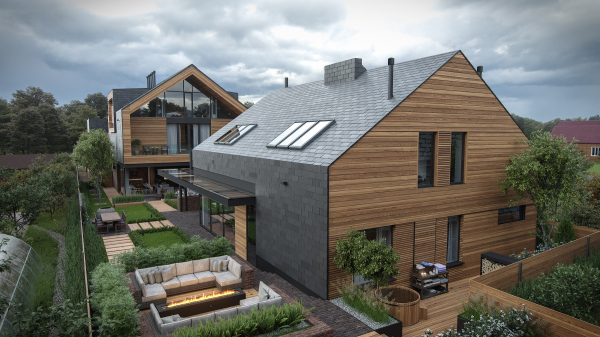 A private residence in PodushkinoCopyright: © MAParchitects A private residence in PodushkinoCopyright: © MAParchitects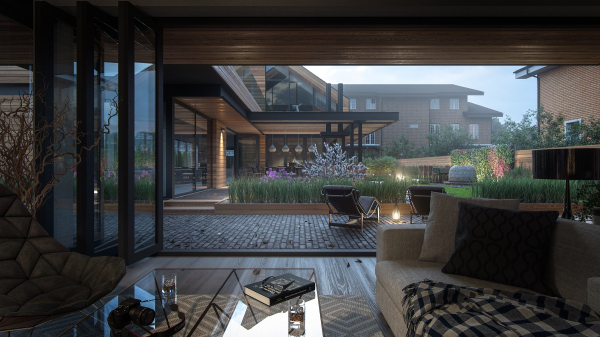 A private residence in PodushkinoCopyright: © MAParchitects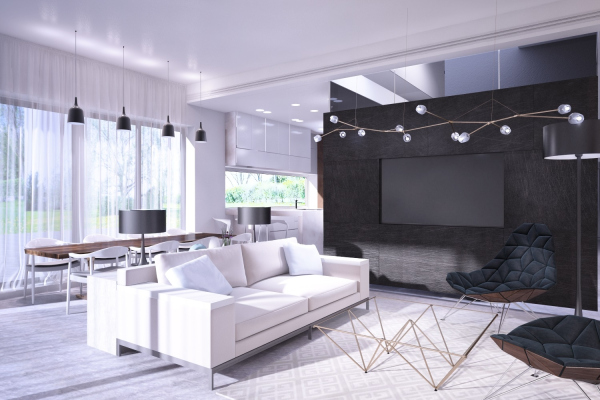 A private residence in PodushkinoCopyright: © MAParchitects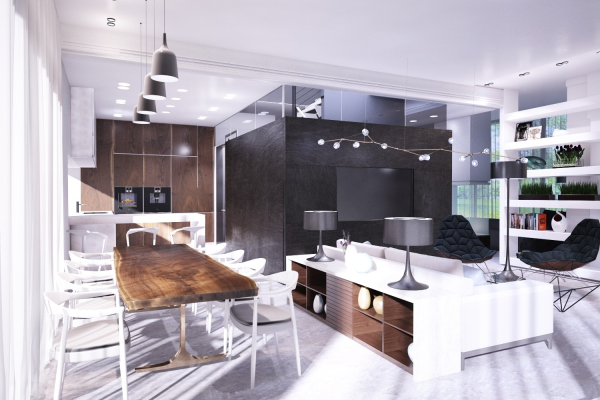 A private residence in PodushkinoCopyright: © MAParchitectsWe have many options of private residences. There is an energy-efficient wooden house, the interpretation of the Russian izba. The Russian izba had in it a seni (something like an anteroom), a cowshed, and many other premises all gathered under the same roof – it was a whole mechanism. You take these basics but you add the modern functions like a patio. Then there are duplexes – a rare typology for the Moscow area. In Podushkino, we had a really narrow strip of land, and built upon it a residence with various terraces, hidden and open-air ones, combining the image of a traditional house with modern technologies. How do you manage to keep so many projects in your head? It’s the other way around – the great number of projects helps me! I like to have several projects going at once because the solutions that I find in one project can help me answer questions in another one. Links |
|

